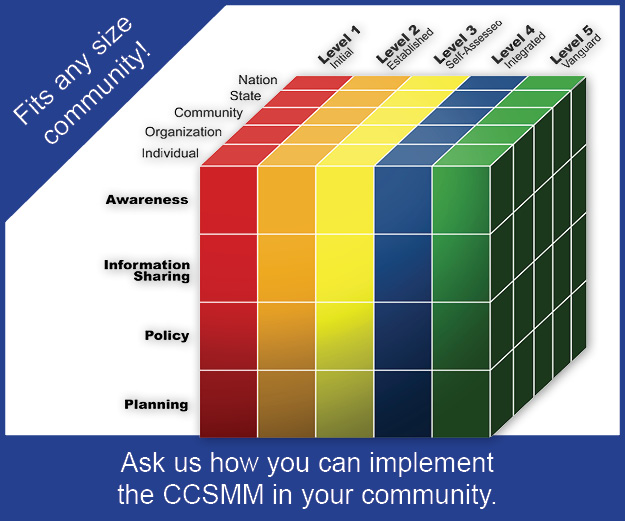by Monique LaPlante, Info Security Instructor II, CIAS-ISAO
The importance of cybersecurity cannot be emphasized enough in today’s connected society. Digital technology is at the core of every part of our lives; therefore, organizations must construct their defenses against cyber-attacks using cybersecurity policies as the framework. In this post, we will go into what typically makes up a security policy, as well as how to distinguish between control objectives, standards, guidelines and procedures. We will also look at why cybersecurity policies are so essential.
Why Is It Important to Have Cybersecurity Policies?
1. Risk Mitigation: Cyberthreats are continually developing, growing more sophisticated and frequent. Cybersecurity policies are crucial tools for detecting, evaluating and managing these risks. They offer a tactical framework for identifying potential weaknesses and detailing the steps required to protect the organization.
2. Legal and Regulatory Compliance: Strict data protection laws and regulations are enforced across various sectors. Organizations can lower their risk of steep fines and other legal repercussions by implementing cybersecurity policies that help ensure compliance with these regulatory obligations.
3. Clarity and Consistency: Policies create a set of rules that all stakeholders, including workers, contractors and clients, can adhere to. This uniformity decreases the chance of human error and security breaches.
What Should be Included in a Security Policy?
1. Introduction and Purpose: A description of the policy’s goals, scope and purpose.
2. Definitions: There should be clear definitions of all significant terms and concepts to ensure that everyone is familiar with the policy’s contents.
3. Policy Statement: A brief statement that outlines the organization’s stance on cybersecurity, emphasizes its significance and links to its objectives.
4. Roles and Responsibilities: Define who or what teams oversee putting the policy into practice and ensuring it is followed.
Security Policy Recommendations
1. Risk Assessment and Management: Instructions on how the organization recognizes, evaluates and manages cybersecurity threats, including risk assessment techniques.
2. Access Control: Procedures governing user access, authentication, authorization and password administration to protect systems and data.
3. Data Protection: Policies for managing sensitive data, encryption and data storage, guaranteeing adherence to data protection laws.
4. Incident Response: Protocols for identifying, documenting and handling security events, including communication guidelines and escalation techniques.
5. Training and Understanding: Information on cybersecurity training initiatives and campaigns to increase staff understanding of security best practices.
6. Monitoring and Auditing: Methods for keeping track of system and network activity and for regular security audits and evaluations.
7. Compliance and Enforcement: Information on the methods used by the company to guarantee policy adherence and the penalties for infractions.
The Differences Between Policies, Control Objectives, Standards, Guidelines and Procedures
Knowing the differences between policies, control objectives, standards, guidelines and procedures is crucial to avoid misunderstandings.
Policies: The broad goals and guiding principles of an organization’s cybersecurity are outlined. Policies ultimately derive from internal and external influences (PCI DSS, etc.).
Control Objectives: Defining the desired results or aims of security measures, control objectives are more explicit than policies. They offer a planned strategy, and each control objective connects to a policy.
Standards: These are explicit guidelines that must be followed to accomplish control goals. Every standard connects to a control objective.
Guidelines: Give suggestions and best practices. In general, they are more consultative and offer flexibility. Guidelines give support to the standards.
Procedures: Step-by-step guides that explain how to do tasks or processes. They outline the exact steps to be done in various scenarios and are extremely thorough. Procedures connect to a control that was put into place to support a standard.
The foundation of an organization’s security posture is its cybersecurity policies. They offer a comprehensive framework for risk management, assuring compliance and upholding a unified approach to cybersecurity. Organizations may better safeguard themselves in a world that is becoming more digital and connected by knowing the elements of a security policy and the differences between policies, control objectives, standards, guidelines and procedures.
The SANS Institute includes many great examples of Information Security Policy templates open for use here. Additionally, NIST also provides a fantastic policy template guide that is available to the public.
If you are interested in learning how to develop any of the documents mentioned above or would like assistance in developing your organization’s cybersecurity policies, please contact the CIAS at cias@utsa.edu.
Sources:
Compliance Forge. (n.d.). Policies vs Standards vs Controls vs Procedures. Retrieved September 12, 2023, from https://www.complianceforge.com/grc/policy-vs-standard-vs-control-vs-procedure
Create a cyber security policy. (2023, March 7). Create a cyber security policy. Support for businesses in Australia. https://business.gov.au/online/cyber-security/create-a-cyber-security-policy
Dunham, R. (2021, October 26). The importance of a company information security policy. Linford & Company LLP. https://linfordco.com/blog/information-security-policies/
Lutkevich, B. (2021, September). What is a Security Policy? – Definition from SearchSecurity. Security. https://www.techtarget.com/searchsecurity/definition/security-policy
NIST Cybersecurity Framework Policy Template Guide. (n.d.). https://www.cisecurity.org/-/jssmedia/Project/cisecurity/cisecurity/data/media/files/uploads/2021/11/NIST-Cybersecurity-Framework-Policy-Template-Guide-v2111Online.pdf
Security policy templates. Information Security Policy Templates | SANS Institute. (n.d.). https://www.sans.org/information-security-policy


